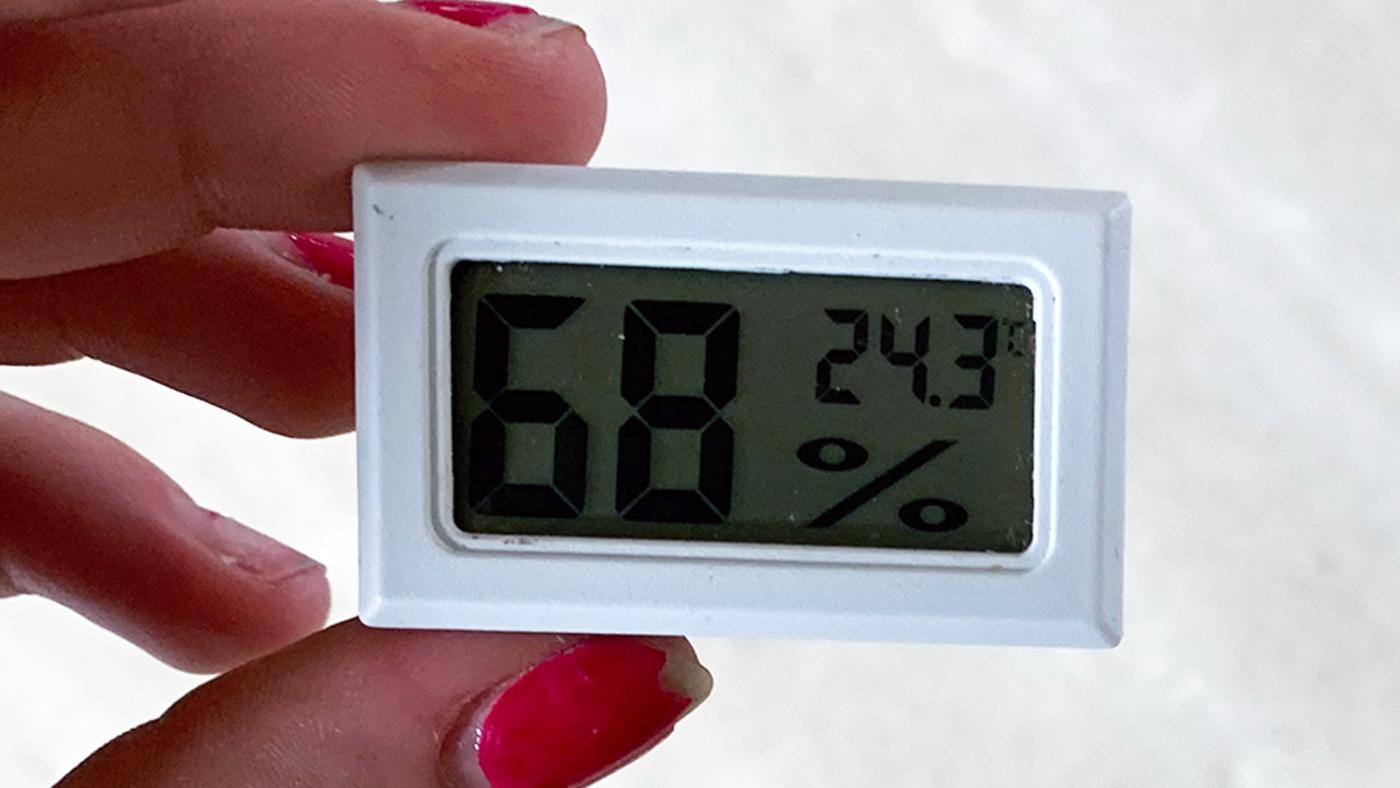Is 19 degrees too cold for a lecture hall?
'My hands get cold sometimes. That's annoying'

For a little while, it seemed as though the summer had missed us just as much as we had missed it: the last days of October were mild and sunny. It took a while but November is finally blowing its cold winds through the streets. It's cold outside (on the bike, on the tram, standing in line for a sandwich) and indoors as well. Many students are shivering because those who aren’t too broke are too woke to turn up the heat. What about lecture halls, though?
Are students feeling cold in class following the university’s initiative to set its thermostats no higher than 19 degrees rather than the previous 21? The measure was taken in response to a government campaign called Zet ook de knop om ("Turn that dial down", Ed.) which pleaded with citizens and companies to reduce the country’s dependence on Russian gas. One of the ways to do so is by using less gas to heat buildings. In addition to adhering to the campaign, UU’s actions also contribute to its own climate goals.
Perhaps you're wondering whether a two-degree decrease really makes such a big difference in energy use. The answer is yes, says the UU (only with Solis-ID). The gas consumption of the UU is approximately 20 million cubic metres of gas each year. The university saves 1.5 to 3 million cubic metres with a two-degree decrease. That's the amount 1100 Dutch households use yearly. Data that makes you feel warm, indeed.
But what does this measure mean for the comfort and concentration of students? Now that the cold is in the air, it is time to evaluate. Armed with a pen and a thermometer, we visited numerous university buildings on a rainy day (the temperature outdoors was 13 degrees Celsius).
Is it cold at UU?
Let's start with a thermometer overview. The lecture halls at the Educatorium and Koningsberger buildings, both in the Utrecht Science Park, measure 20.8 degrees. The study rooms at the Minnaert building were heated at 21.5 degrees, while an empty lecture hall at Janskerkhof 2-3 measured a toasty warm 21.6 degrees. But the record highs are found in the hallways: 23.4 degrees at Janskerkhof and 24.3 at Educatorium. Based on these measurements, you could say the university is still a pretty warm place. Actually, you may even wonder whether the university is sticking to its own promise.

But the thermometer isn't the sole holder of wisdom. One can spot plenty of jumpers in the hallways and, in the exam halls, students are typing away with scarves around their necks. “I almost froze to death,” a student complains after a class at Educatorium. Perhaps a more accurate measure might be to ask students how they feel?
Are students cold at UU?
Eva (20) is wearing a thick, black jumper with a turtleneck popping out of it. She’s been cold at the university for weeks, especially in the study rooms at Janskerkhof 2-3 and the lecture halls at Educatorium. It's not the first time she feels this way, though. “I start going to university in jumpers around September, every single year."
Sytske (19), who’s wearing a fuzzy green jumper, has also noticed that temperatures in the Koningsberger building dropped this week. “The practicum sessions in the Koningsberger building are particularly cold. The lecture halls are draughty too.” She starts to shiver. “I can’t wait to put on my lab coat again.”
Timo (23) grabbed a short-sleeved T-shirt from his wardrobe this morning, while Sergio (23) went for a slightly less optimistic red UU hoodie. Both aren't bothered by a thing. Timo: “The temperatures are okay in the Minnaert and Koningsberger buildings. Besides, I’d actually call the Hans Freudenthal building rather warm and stuffy.” Sergio agrees: “Yeah, but you often wear shorts in October.” Sergio says he is wearing nothing underneath his hoodie because that's comfortable. “I haven’t felt cold yet.”
It might seem stereotypical that the men we questioned don't feel cold but research shows that women do get cold faster than men. That’s because, as a general rule, women have less muscle — and muscles produce heat. Moreover, women have more fat tissue on average, which means that the heat produced by their muscles has a much harder time reaching the body’s extremities. Even so, Sergio doesn’t think that is any reason to turn up the heat. “Isn’t a little cold actually good for your concentration?”
Cold and concentration
He has a point there: a British study shows that people are actually better at performing tasks in a cool room. They tend to be more productive and sharper at lower temperatures. But, to Sytske, the university shouldn't get much colder than it is. “Sometimes I shiver in class or my hands get cold, which is annoying. Then I spend the whole time thinking about how cold I am.” She says the temperatures haven't caused any issues with the progress of her studies so far but they might if the temperatures were to drop even further.
Eva is also bothered by the cold sometimes: “Last week, I was studying at Janskerkhof and my fingers became stiff and blue.”
No difference compared to previous years
Remarkably, none of them had heard about the university’s heating policy before the interview. They hadn't noticed any contrast to previous years, either. Eva: “That makes sense in a way. I’m cold every winter.” Sergio: “But the university could spread the message better. That way, people who tend to get cold quickly would take that into account.”
The question is whether the temperature is any different from previous years. After all, the thermometer indicates that the average temperature at the university remains well over 20 degrees. In many spaces that are already warm, the radiators feel hot to the touch.
How is that possible? According to Marloes Beering, Communications Officer at UU’s Green Office, the thermostat is definitely set to 19 degrees, except in the labs because some types of research require different temperatures. It doesn't surprise her that the temperatures measured in the lecture halls and hallways are higher than 19 degrees: environmental factors such as the presence of people or the sun shining through the windows can influence the temperature, not to mention the weather outside and the equipment used in the buildings.

Saving the climate by putting on a jumper
Whatever the actual temperature at the university may be, all the students we talked to support UU's decision to turn down the heating as they believe in the importance of using less energy, especially to contain global warming. Those who are bothered by the cold are happy to wear an extra jumper.
Besides, 19 degrees isn’t even that cold. At home, Sergio and Timo’s thermostat doesn’t go any higher than 19 degrees either, again for climate-related reasons. “At my father’s house, it’s always 17 or 18 degrees” sighs Systke. “Now that is truly annoying. But 19 degrees is fine.”
Eva agrees: “It sucks when you’re cold in class but walking around for a bit helps. Just remember to bring a thicker jumper next time.” That's exactly what she's been doing. Eva points to the mountain of clothing at her feet: an extra jumper, a coat, and a scarf. “That's how I survive.”
However, the students consulted kindly ask the university to be mindful during the coldest months: “It shouldn’t get so cold that it hinders your concentration.”